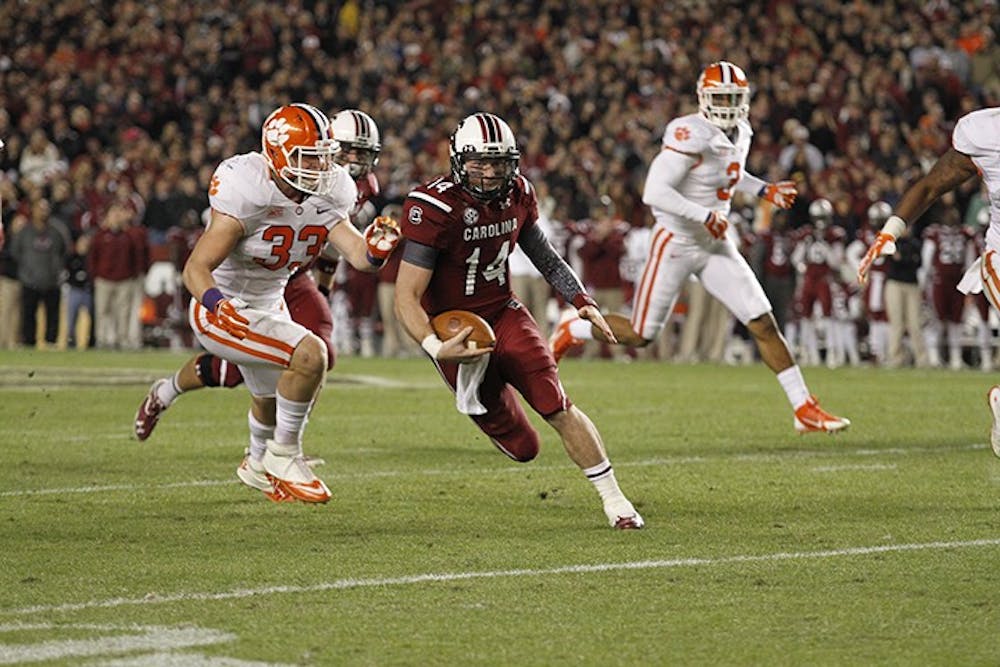“Look Dad, the Gamecocks picked up Arden Key!” a naive 17-year-old said. “Replacing Jadeveon Clowney will be easy.”
“National signing day isn’t for another year and a half, he’ll flip schools before then,” my father replied.
And flip schools he did. Three times, actually.
The 230-pound defensive end from Georgia was among nine players in the 2015 recruiting cycle that chose to take their talents to a place other than Columbia, South Carolina after originally committing to the Gamecocks.
People Change Their Minds
With newer technologies and mediums that put high school athletes in the spotlight, the average fan is closer than ever to the recruiting trail. Fans shell out millions of dollars every year on subscriptions to recruiting websites so they can be the first to know about every rumor, commitment and inevitably, decommitment.
Ultimately though, don’t put too much stock in recruiting until every player has signed on the dotted line.
Approximately 80 percent of college students change their major at least once, so it should not come as a surprise when a high-schooler changes his mind about where he wants to spend the next four years, especially if that decision could impact his chance of playing professionally.
Teenagers will change their minds, and though most will not end up flip-flopping as much as Arden Key, some will choose to play for a school other than the one to which they originally committed.
When uncommitted, recruits are allowed unlimited unofficial visits to programs. On these visits they can meet with coaches, watch games or simply tour the campus, as long as they foot the bill. Teams can be quite convincing and may cause an athlete to either commit too soon or change their mind.
Schools come at recruits from a multitude of angles, each one trying to undermine the arguments of the others as much as possible while attempting to boost their own credibility. With so much pressure, many players will commit to close their recruiting and relieve some of the stress of the recruiting blitz.
Some players will decommit; it's a part of the process.
Class Rankings Change
As late as July 2014, South Carolina’s 2015 recruiting class ranked sixth nationally. While other teams added commitments throughout the year though, the Gamecocks lost players and ended up 19th, according to 247’s composite rankings.
Each major recruiting site has its own rankings, so a player highly-touted by one source may carry a lower rating on another.
All-Pro defensive end JJ Watt was a two-star tight end out of high school. Gamecock wide receiver Pharoh Cooper was pegged as a three-star prospect that would struggle to find a fit. Three-star recruits sometimes pan out better than five-star players, so recruiting rankings are often insignificant.
No-brainer prospects are a rare breed. There's no guarantee that a class will have a Jadeveon Clowney-type recruit. Thus, each team has their own scouts that rank high school prospects based upon their own observations.
All that matters is production on the field. Some teams, namely Alabama, have recruiting classes that constantly rank in the top five and see that success translate on the field. For others though, top classes do not always translate to on-field success.
South Carolina's 2010 recruiting class finished 26th in the country while producing players like Marcus Lattimore, A.J. Cann, Dylan Thompson, Corey Robinson and Connor Shaw. If re-evaluated, that class would surely be moved into the top 10 for that year.
Recruiting is just a single aspect of the complicated game that is college football. A single recruiting class can’t win a championship, but it can lose one.
Don’t judge a player before he signs, and don’t judge a class until the players actually see the field. In the chaos of 21st century recruiting, fans should take what they hear with a grain of salt because the only things that matter are wins and losses.

